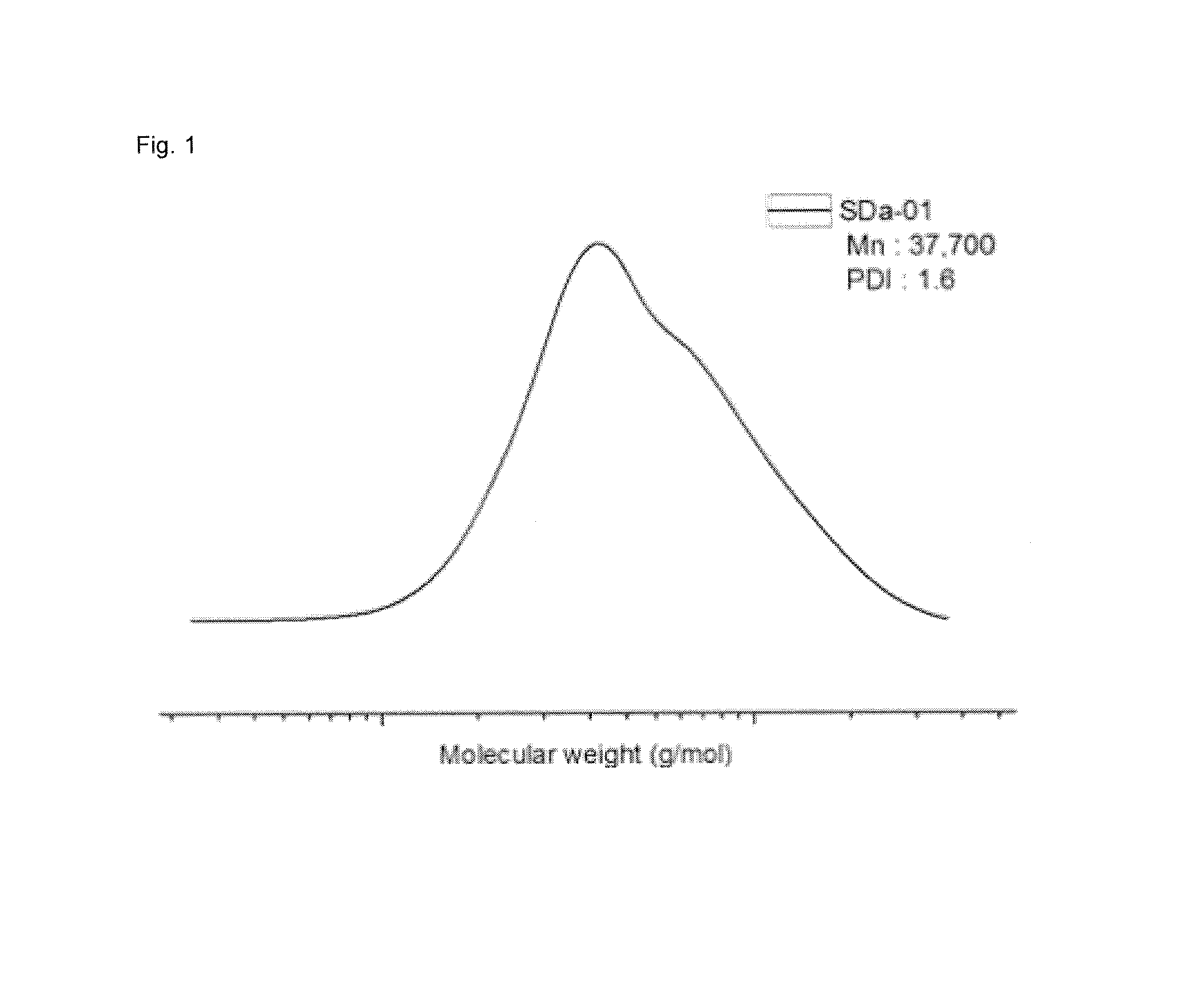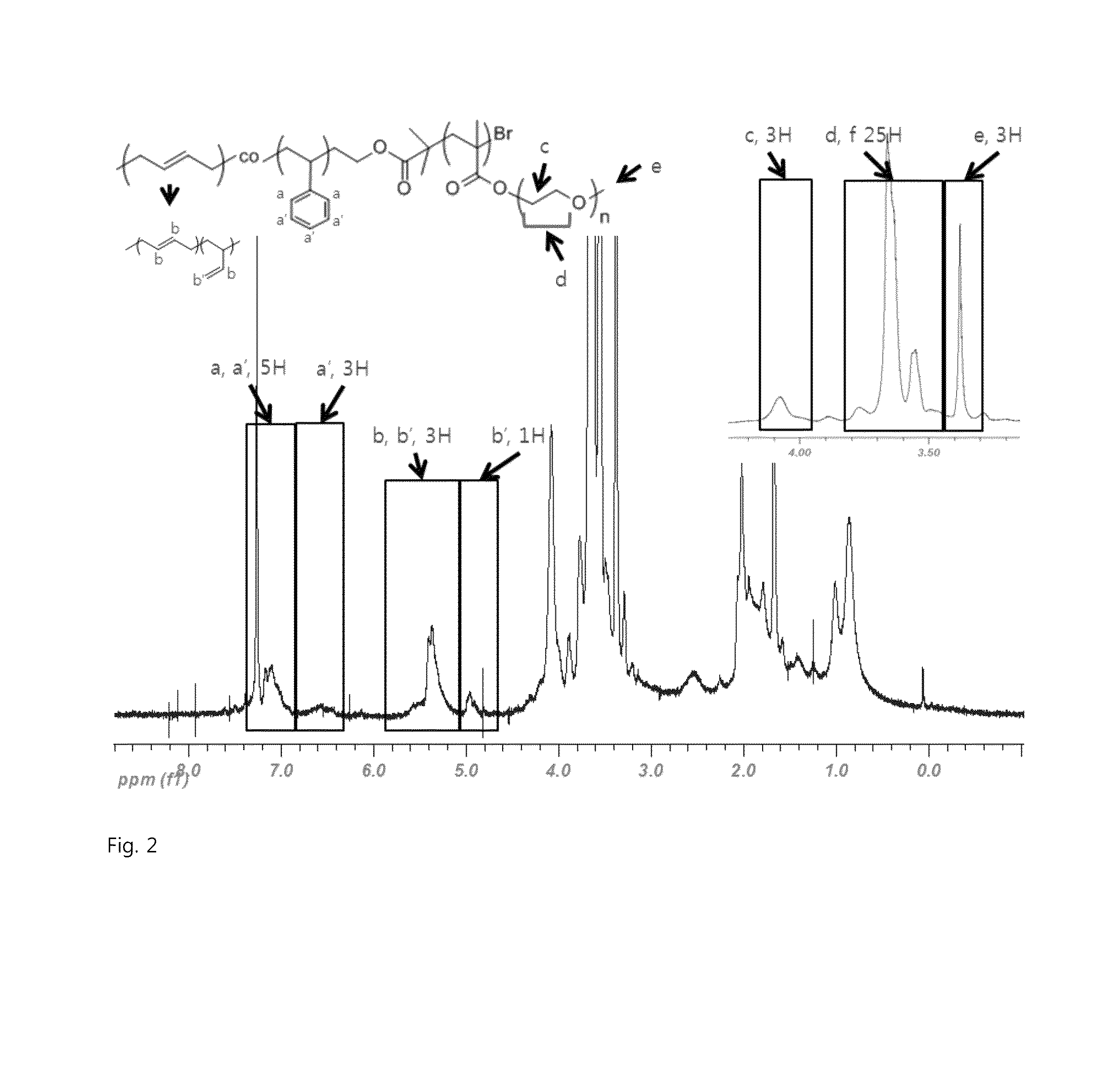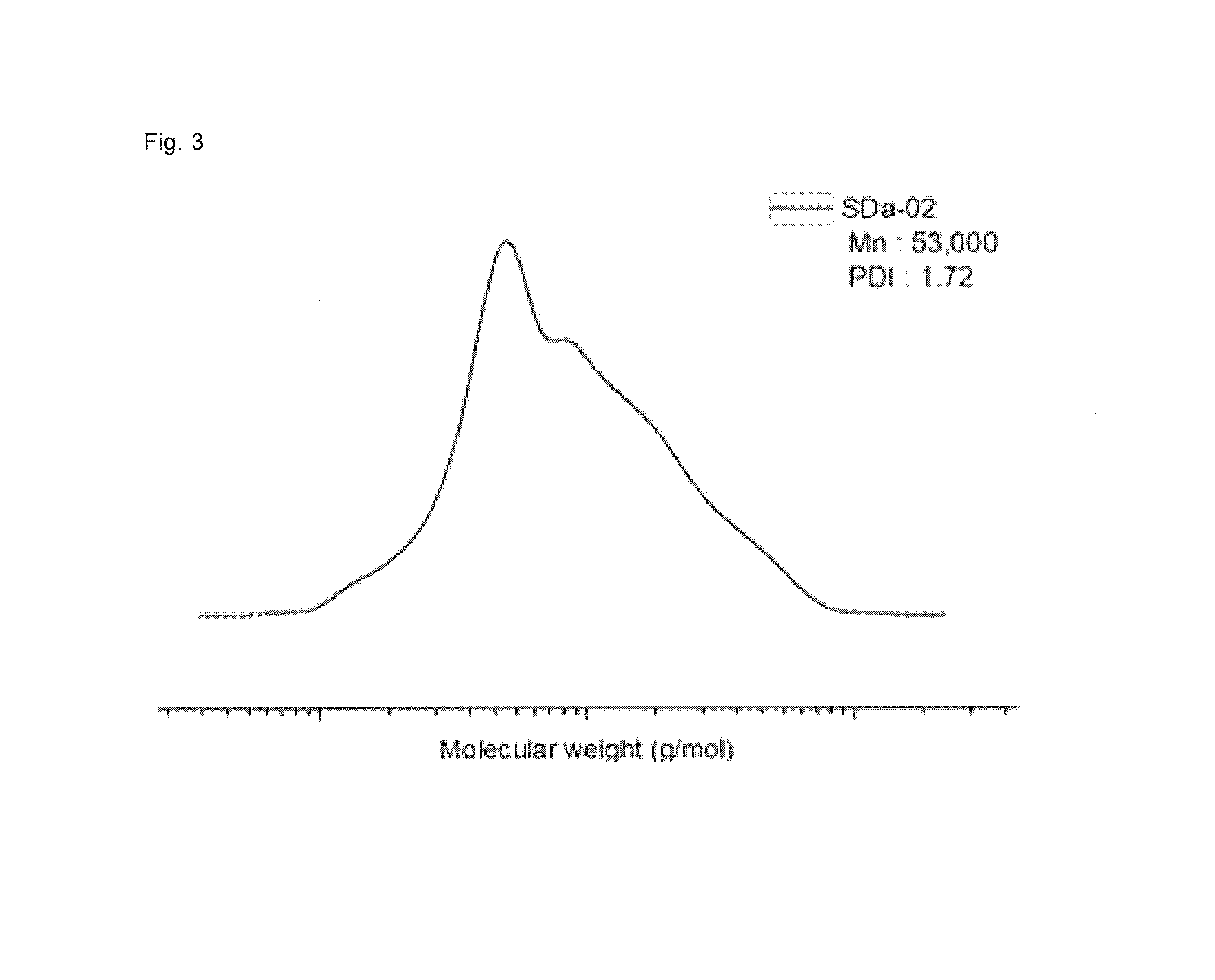Interfacial polymer for rubber-silica network
a technology of interfacial polymer and rubber, which is applied in the direction of rolling resistance optimization, road transportation emission reduction, etc., can solve the problems of high cost of silane coupling agent, low compatibility of rubber and silica, and inability to uniformly disperse silica within the rubber, so as to improve the mechanical property and dynamic property of rubber, improve the effect of fuel efficiency and wet skid resistance characteristics during driving the automobil
- Summary
- Abstract
- Description
- Claims
- Application Information
AI Technical Summary
Benefits of technology
Problems solved by technology
Method used
Image
Examples
example 1
[0076]Under nitrogen atmosphere, a 2 L stainless reactor was charged with cyclohexane 800 g, ditetrahydrofurylpropane 0.08 g, styrene 64 g and butadiene 96 g, and then at a reactor temperature 35° C., n-butyllithium 14 mmol was charged to the reactor, followed by an adiabatic warming reaction. 10 min after the reaction temperature reached the peak temperature, ethyleneoxide 1.6 g was introduced thereto, followed by an additional reaction for 10 min. In that state, the reactor temperature was lowered down to 35° C., and then 2-bromoisobutyryl bromide 8.0 g was added thereto to prepare the polymer of Formula 5. Through GPC analysis, it was determined that the weight-average molecular weight was 14,000, and through H-NMR analysis, it was determined that the content of styrene was 41 wt %, the vinyl content of butadiene was 15 wt %.
[0077]In the charging of [PEGMA300] / [Formula5] / [CuBr] / [PMDETA] / [CuBr2] (in a ratio of 200:1:2:2:0.1) into a dried 100 mL Schlenk flask, CuBr and CuBr2 were c...
example 2
[0078]Under nitrogen atmosphere, a 2 L stainless reactor was charged with cyclohexane 800 g, ditetrahydrofurylpropane 0.08 g, styrene 64 g and butadiene 96 g, and then at a reactor temperature 35° C., n-butyllithium 14 mmol was charged to the reactor, followed by an adiabatic warming reaction. 10 min after the reaction temperature reached the peak temperature, ethylene oxide 0.8 g was introduced thereto, followed by an additional reaction for 10 min. In that state, the reactor temperature was lowered down to 35° C., and then 2-bromoisobutyryl bromide 4.0 g was added thereto to prepare the polymer of Formula 5. Through GPC analysis, it was determined that the weight-average molecular weight was 14,000, and through H-NMR analysis, it was determined that the content of styrene was 41 wt %, the vinyl content of butadiene was 16 wt %.
[0079]In the charging of [PEGMA300] / [Formula5] / [CuBr] / [PMDETA] / [CuBr2] (in a ratio of 200:1:2:2:0.1) into a dried 100 mL Schlenk flask, CuBr and CuBr2 were ...
example 3
[0081]Under nitrogen atmosphere, a 2 L stainless reactor was charged with cyclohexane 800 g, ditetrahydrofurylpropane 0.08 g, styrene 64 g and butadiene 96 g, and then at a reactor temperature 35° C., n-butyllithium 16 mmol was charged to the reactor, followed by an adiabatic warming reaction. 10 min after the reaction temperature reached the peak temperature, ethylene oxide 0.4 g was introduced thereto, followed by an additional reaction for 10 min. In that state, the reactor temperature was lowered down to 35° C., and then 2-bromoisobutyryl bromide 2.0 g was added thereto to prepare the polymer of Formula 5. Through GPC analysis, it was determined that the weight-average molecular weight was 10,000 and through H-NMR analysis, it was determined that the content of styrene was 41 wt %, the vinyl content of butadiene was 18 wt %.
[0082]In the charging of [PEGMA300] / [Formula5] / [CuBr] / [PMDETA] / [CuBr2] (in a ratio of 200:1:2:2:0.1) into a dried 100 mL Schlenk flask, CuBr and CuBr2 were c...
PUM
| Property | Measurement | Unit |
|---|---|---|
| temperature | aaaaa | aaaaa |
| temperature | aaaaa | aaaaa |
| temperature | aaaaa | aaaaa |
Abstract
Description
Claims
Application Information
 Login to View More
Login to View More - R&D
- Intellectual Property
- Life Sciences
- Materials
- Tech Scout
- Unparalleled Data Quality
- Higher Quality Content
- 60% Fewer Hallucinations
Browse by: Latest US Patents, China's latest patents, Technical Efficacy Thesaurus, Application Domain, Technology Topic, Popular Technical Reports.
© 2025 PatSnap. All rights reserved.Legal|Privacy policy|Modern Slavery Act Transparency Statement|Sitemap|About US| Contact US: help@patsnap.com



